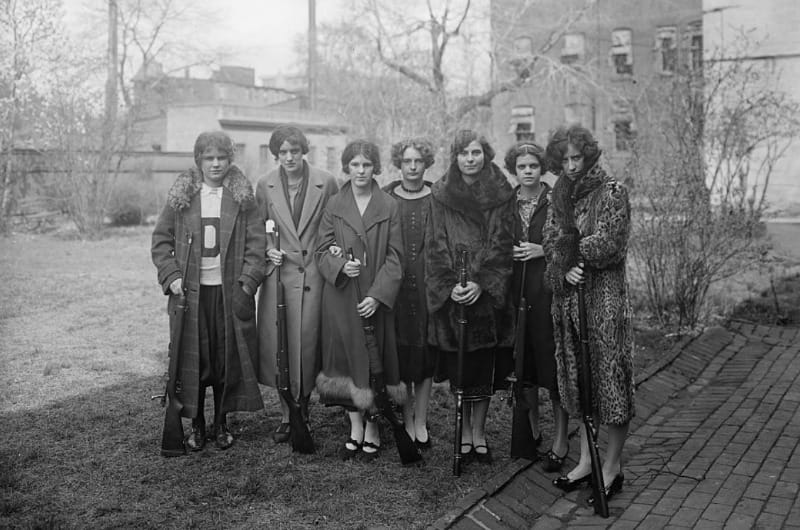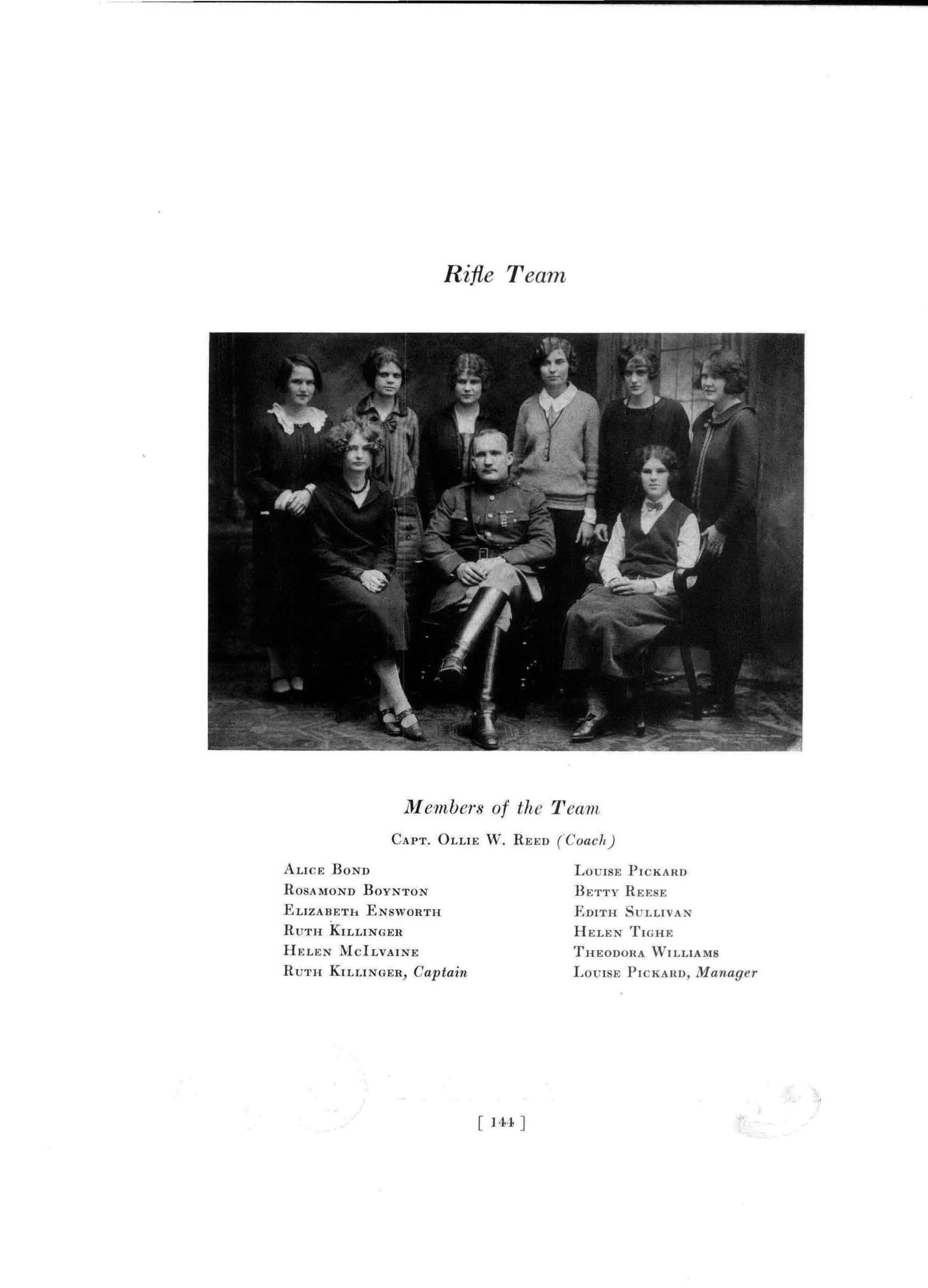Set Your Sights on Drexel’s Women’s Rifle Team

This article is part of the DrexelNow “Faces of Drexel” series honoring Drexel’s history as part of the Universitywide celebration of the 125th anniversary of Drexel’s founding in 1891.
In the first half of the 20th century, Drexel was home to one of the oldest and most accomplished female collegiate rifle teams in the country. During its 40-something year history, the team consistently placed near the top of its collegiate rifle league and outshot Drexel’s men’s teams — all the while fighting sexist notions of their gender and sport.
Drexel’s rifle program started in 1919 as a way for male ROTC students to practice techniques and weaponry. Though female students couldn’t receive that training in classes, a women’s program began shortly afterward. Most participants hadn’t shot a rifle before, but they excelled quickly under the tutelage of Drexel’s ROTC instructors. In 1922, their instructor, Capt. J.P. Lyons, was quoted in The New York Times as proclaiming, “I would like to match the girls against any boys’ rifle team in the country.”
The team, which had varsity and junior varsity levels, frequently placed at the top of the small but competitive group of women’s collegiate rifle teams. The students often played against the University of Pennsylvania, Beaver College (now Arcadia University) and George Washington University. Drexel and the last two schools regularly placed in the top five spots in the National Women’s Rifle Championships from the 1930s to the late 1950s.
The team’s lack of a steady traveling budget meant that only a few matches a season were actually shot in the presence of their opponents; otherwise, the teams shot on their own ranges and compared scores. But Drexel’s women’s team could always compete against the men’s team on campus. These battles began in the rifle range in the basement of Main Building, before moving to a newer venue built on the fourth floor of Curtis Hall in 1928.
Stakes were high in these shoots: the loser bought the winner a nice steak dinner and endured teasing until the next match. Drexel’s independent student newspaper, The Triangle, often reported the outcome of such games. The articles describing the women’s wins downplayed their success by focusing on how the men played with a handicap, like not employing their best shooters or giving the women more points as a head’s start.

The Triangle’s sexist language wasn’t limited to on-campus competitions. In 1954, when the women’s team won its fifth national team championship in eight years, they did so “while going about in their quiet and unassuming manner,” according to the article.
More often than not, the physical beauty and marital status of a member of the women’s rifle team were included in articles. One 1938 article announced that “some of the prettiest lassies” on campus played on the team. About 14 years later, an article reporting the women’s team’s recent national championship win revealed, “Without exception, all of the varsity members are attractive.” Over the years, students were often described as “pretty” good shots and “hot shots.”
Above all, the most reoccurring nicknames used for the team referenced the famous female shooter Annie Oakley, a trick shooter who dominated the predominantly man’s world of shooting in the late 19th and early 20th centuries. Though Oakley was not a competitive shooter like the Drexel students, the team was nevertheless called “Drexel’s Annie Oakleys,” “Annie Oakleys,” “Tech Annie Oakleys” and “female ‘Annie Oakleys” (as if the men would ever be called “Annie Oakleys”).
As it turns out, Oakley was aware of the Drexel women’s team. The renowned sharpshooter was performing at a Philadelphia Phillies game in 1923 when some of the players mentioned Drexel’s women’s rifle team. Having already seen photographs of the team’s members, Oakley reportedly replied, “I only wish I had the opportunity to give them a little instruction. I can tell by the photographs … that they do not hold their rifles quite right. I could rectify that easily and make them better than they are, even if they have never been beaten.”

Annie Oakley never got a chance to instruct the team and eventually, there would no longer be any Drexel Annie Oakleys, either. The women’s program combined with the men’s programs in the 1960s when ROTC stopped becoming mandatory and therefore stopped overseeing the teams.
There were just a few women on the coed Drexel University Rifle Team, then a club sport, in the 1980s and 1990s. In 2003, Drexel’s rifle program was shut down by the administration due to public safety concerns, a lack of leadership and the need for expensive renovations to the rifle range, as the same one had been in use since 1928.
By that time, the team was all men — a stark contrast to the popular and successful women’s rifle program that had made a name for itself (and was given many nicknames) about 80 years before.
In This Article
Drexel News is produced by
University Marketing and Communications.

